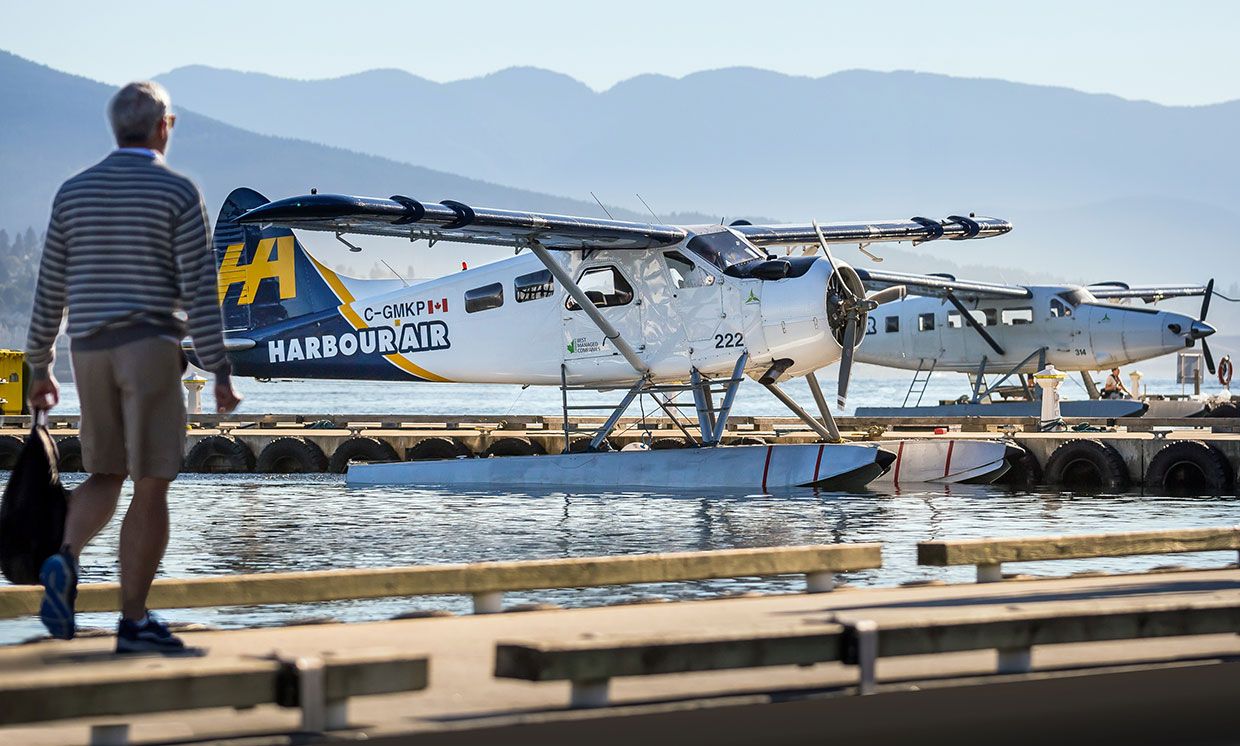First Passenger Electric Aircraft to Take Off Soon
magniX and Harbour Air team up to make the first all-electric commercial airplane fleet
In about a decade, Elon Musk’s crazy pipe dream of building an all-electric car became the Tesla Model 3, the best-selling electric car in the world in 2018. Now every major carmaker is working on its own electric offering.
Seattle, Washington-based magniX wants to be a Tesla-like trailblazer for electric aviation. The startup today announced plans to partner with Canadian airline Harbour Air to create the first fully electric commercial fleet.
Harbour Air operates 30,000 flights over 12 routes in the Pacific Northwest each year, carrying 500,000 passengers on its small seaplanes. MagniX will begin by swapping the fuel tanks and Pratt & Whitney engines on the airline’s six-passenger Havilland Beaver aircraft in exchange for its 560-kilowatt (750-horsepower) electric motor and lithium-ion batteries that provide enough energy to fly about 160 kilometers (100 miles) on a single charge. That, says Harbour, is enough range for the airline’s short-hop flights. Flight tests will happen later this year.
The cost of retrofitting the planes will not exceed what a standard engine overhaul—required after every 2,000 or so hours of flight time—typically costs, says magniX’s CEO Roei Ganzarski, a Boeing veteran. What’s more, Harbour will no longer have to worry about one of an airline’s biggest expenses: fuel. Exactly how much savings the company will realize by plugging in instead of filling up remains to be seen. But Harbour can expect to save on maintenance costs after the switch to electric propulsion.
As Tesla discovered years ago, the challenge is to find the right class of aircraft, says Ganzarski. One includes cargo airplanes such as the Cessna 208 Caravan, delivery companies such as FedEx rely on, but is also used to carry passengers for short flights. Another is short-hop aircraft like the Beaver.
The flight range for retrofitted airplanes should double by 2025, as they are equipped with advanced battery technologies that MagniX’s three battery suppliers are working on, Ganzarski says. These include solid-state lithium batteries and aluminum batteries—new technologies that promise to be lighter and have more capacity.
MagniX is also working with a partner to design and build an all-electric aircraft that, even with today’s batteries, would have more than 800 km (500 miles) of range.
Aside from the batteries, the key requirement for electric aircraft is the motor’s power-to-weight ratio. magniX’s 560 kW motor weighs 100 kilograms, for a robust 5 kW/kg. Packing power into a lightweight package is expensive—prohibitively so for cars and boats—but makes sense for aircraft. Only one other company has made an electric motor that packs the same power: Siemens, which is supplying motors for the small electric airplanes being developed by Denver, Colorado-based Bye Aerospace.
Siemens and others are also making hybrid systems that combine gas turbines and batteries. Zunum Aero, which is backed by Boeing and JetBlue, is building a 12-passenger hybrid-electric airplane, which it also plans to test this year (with plans to make it commercially available in 2022). But, says magniX’s Ganzarski, “Hybrid propulsion is just half a step forward. It’s an easier step, but only an interim solution. All-electric is the only way to go.”
Prachi Patel is a freelance journalist based in Pittsburgh. She writes about energy, biotechnology, materials science, nanotechnology, and computing.
